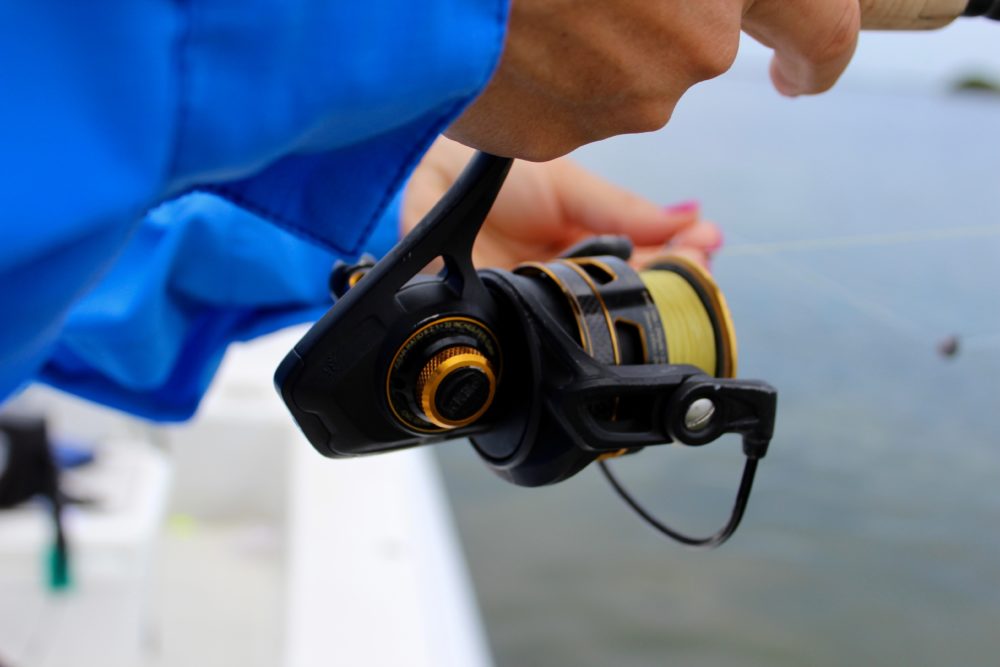Fishing resources and tips for the empowered female angler.
How to Select Inshore Saltwater Fishing Gear
June 20, 2019

Selecting inshore saltwater fishing gear doesn’t have to be complicated. In fact, it’s actually a lot simpler than you might think to pick out a starter set up for your saltwater fishing trips. There are just a few things you should consider before you making a purchase.
First, know that the term “inshore fishing” refers to saltwater fishing in relatively shallow water. In most cases, this means fishing in waters that are within nine miles of the shoreline (including bays, estuaries, channels, and passes).
Next, use these basic inshore saltwater fishing gear guidelines to help narrow down your gear options and make your purchasing decisions easier.
Inshore Rod Length
When purchasing your first inshore saltwater fishing rod, consider the length, power and action you will need. Longer rods will enable you to cast farther while shorter rods will provide you with more power when fighting fish. For most inshore or backcountry fishing situations, a longer rod (6.5 to 7 feet is preferred). The added length can help you get your lures or baits up close to mangroves or oyster bars without spooking wary fish in shallow water.
Rod Power & Action
Don’t let terms like power and action befuddle you if this is your first experience buying a fishing rod. Rod power (heavy, medium heavy, medium) just refers to the “backbone” or lifting power of the rod. In most cases, a medium power rod will be your best choice for inshore saltwater fishing. Heavier power rods handle heavy line weights and lighter power rods are better suited for lighter lines.
Rod action (fast, medium, slow) tells you how much of the rod bends when pressure is applied to the tip. A fast-action rod bends in the top third of the blank, medium-action generally bends in the top half of the rod, and slow-action may incorporate bend throughout the majority of the rod blank. A fast action rod is a good choice if you like to use artificial lures and want more sensitivity to feel light bites, but want less flex so that you can quickly steer fish away from docks or mangroves.
Line & Leader Material
The weight of line and leader you use will depend on the species you are targeting, as well as the area you are fishing. For example, 20 to 30-pound fluorocarbon leader material paired with 10 to 15-pound braided line will be sufficient for most inshore saltwater species such as redfish, snook or spotted seatrout. If you are fishing around dock pilings, oyster bars, or rocks, use the heavier 30-pound leader to prevent break-offs and lost fish.
Inshore Fishing Reels
An open-faced saltwater spinning reel (2000 to 3000 series) with corrosion-resistant components is the most effective choice for saltwater inshore fishing. Opt for a reel that has approximately 150 to 200 yards of line capacity when using 10 to 15-pound braid. While chances are slim that you’ll get “spooled,” it can occasionally happen with species like jack crevalle (particularly jumbo-sized jacks), redfish, or tarpon.
Reels with higher gear ratios are better for working lures briskly back to the boat or for quickly gaining line when a fish runs towards the boat. Conversely, reels with lower gear ratios offer cranking power for techniques such as bottom fishing and trolling. Mid-range ratios range between 4:1 and 6:1 and provide enough versatility for most types of inshore saltwater fishing.
Now that you know what to consider when choosing inshore saltwater fishing gear, head to your local tackle shop or outdoor retailer, get what you need, and get out on the water!